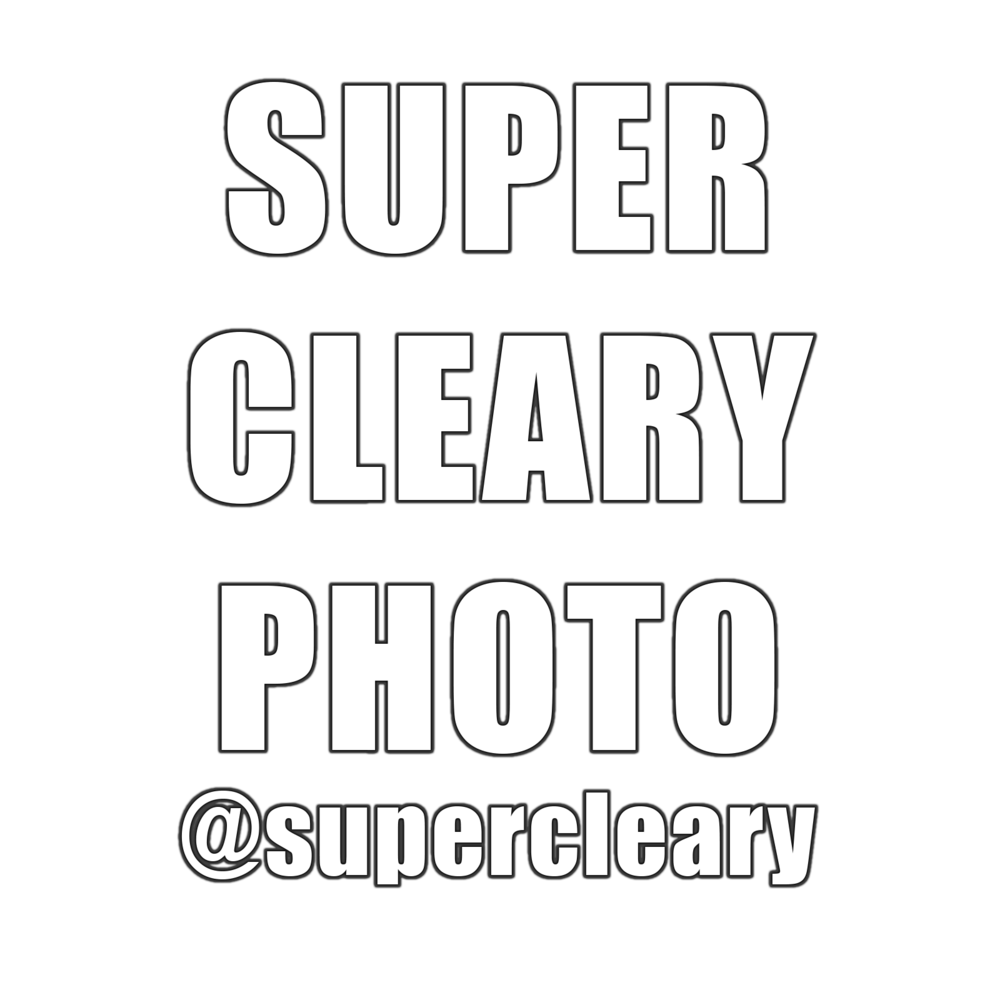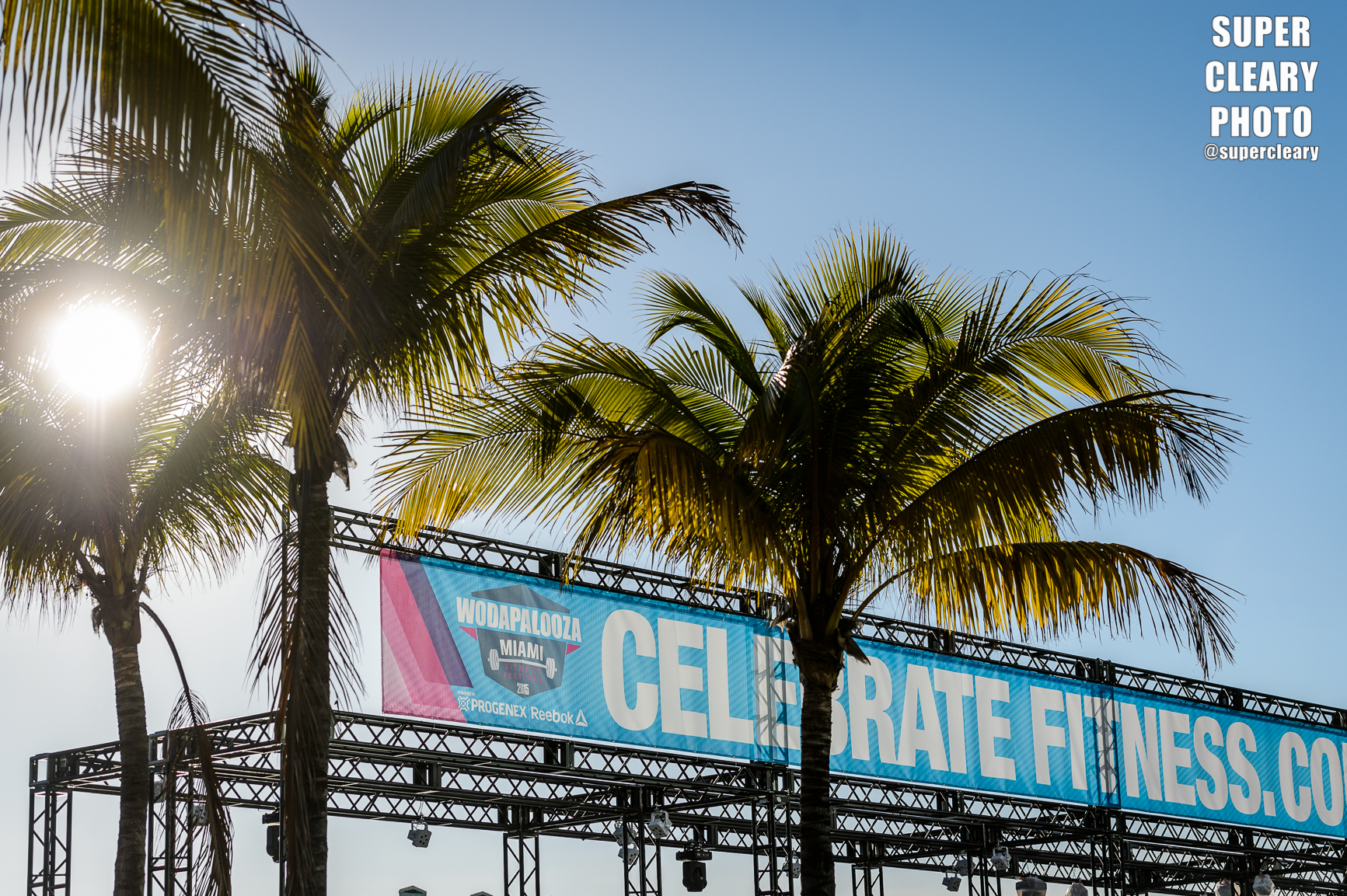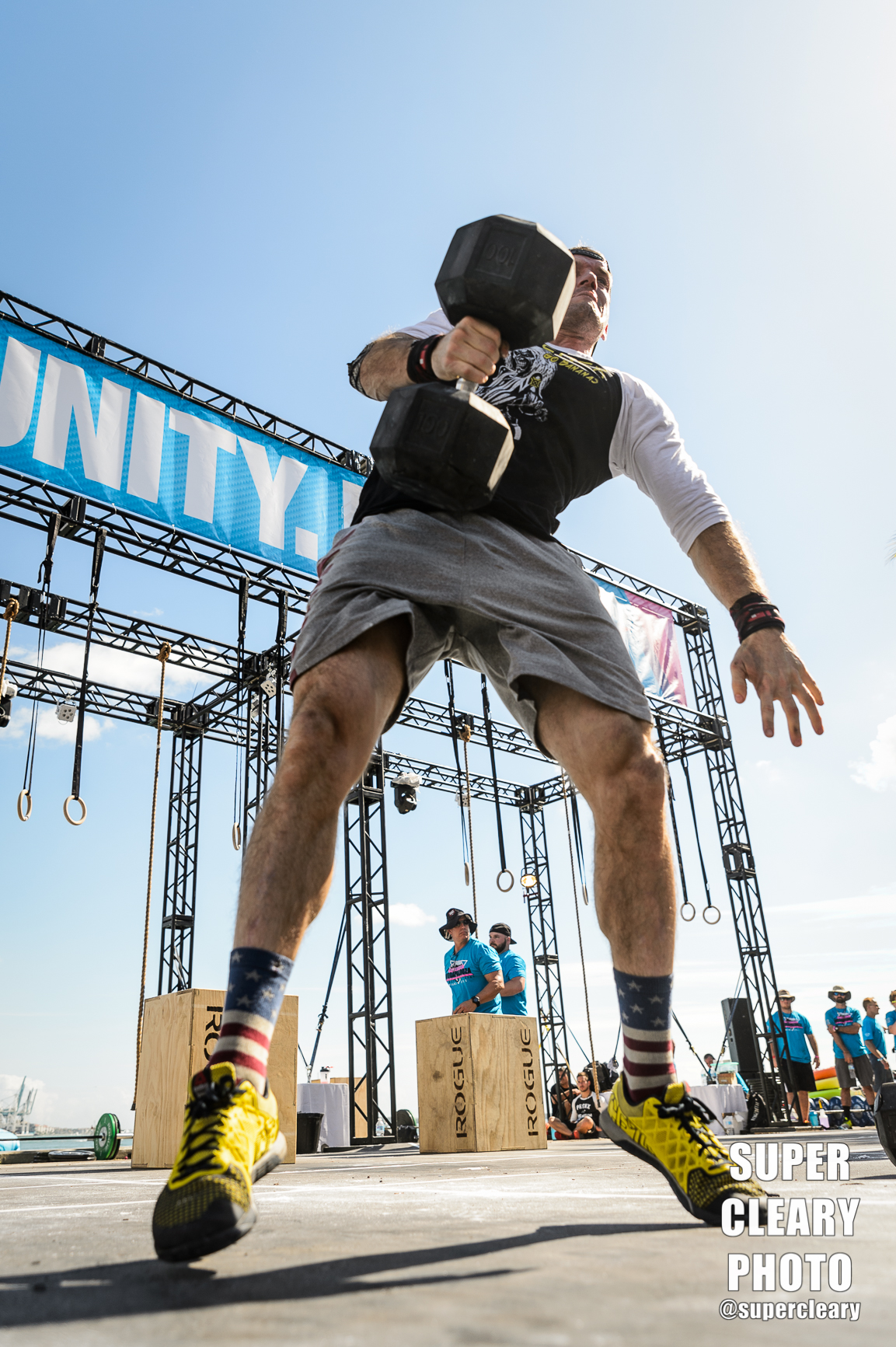The last few weeks I've been on the road so here come the recaps!
I had the privilege of heading down to Miami to shoot Wodapalooza 2015 for Progenex. I know, tough gig.... Miami in January. Quick setup - Wodapalooza (WZA for short) has become one of the largest functional fitness competitions and festivals in the world. It takes place at the incredible Bayfront Park in Miami, with three separate workout zones, 17 divisions, and a massive vendor expo, all along the Miami waterfront.
WZA was sponsored by Progenex, and my gig was to cover their athletes across three days of competition.
Sam Briggs and Emily Bridgers going back and forth during the final event - and during the whole weekend. Sam took the title two years in a row. Nikon D4, Tamron 24-70, 1/400th, F2.8, ISO 320
From a technical standpoint, outdoor events are far easier than indoor events because you know going in it will be an low ISO setup. The real challenges comes from realizing you're going to have to work with the changing light (the sun) over the course of the day. From the incredible golden hour light of the morning and early evening, to the brutal harsh mid-day sun. And the extra bonus, shooting wods at night with extremely limited lighting.
My setup: Nikon D4, Nikon 600 as backup. Go-to lens for the majority of the weekend was the Nikon 70-200 2.8 VRII. I've called this lens magical on more than one occasion, and under optimal shooting conditions like this it didn't disappoint. For large events like this, I bring along my Sigma 120-300 2.8 (an epic lens for big field events), but I wound up having amazing access that let me get very close to the action, so that focal length wasn't really needed. Not that I was complaining, that lens weighs something like 15 pounds. The two other lens I had handy were my Sigma 35 1.4 for some wider stuff (and to bust out during the night events) and my Tamron 24-70 2.8 for some wide zoom during daytime events.
Team Progenex Brute Strength --- These dudes are huge. Nikon D4, Nikon 70-200, 1/2500th, F2.8, ISO 160
Shooting outdoor sports - Aperture vs. Manual
In my mind, there are two main ways to shoot outdoor events: Aperture priority (AP) and full manual each has its advantages and drawbacks. In most situations, I'll lean towards full manual, and I did that for most of the weekend. Aperture priority, means I'm setting aperture and ISO, and letting the camera's computer figure out the shutter speed. If I'm in full manual, I'm setting everything myself, and those settings remain locked until I change them again. AP is extremely helpful if we have a bright sun with clouds sneaking in and out. If I'm in manual and have completely dialed in my exposure when the sun is blocked, I'm great. But, if those clouds blow over, the exposure is going to be completely different, and if I'm not on my game and forget to change that, I could have completely blown-out over exposed images that can't be saved in post processing. Sounds great, but the flip-side of this is if your cameras meter sees something that throws it off, you could have images with your subjects woefully underexposed. Where would AP go wrong? Let's say during any of the bayfront events: where athletes were working on a huge rig built right next to the water. Depending on how you have your cameras metering set, when you point at your subject you might get a meter reading for the bright and reflective water behind them, not your exerciser. If you're not aware of this and anticipate for that, you're going to have a very very dark subject with some nicely exposed water. Of course, their are ways to deal with this (using exposure compensation, as well as using center-weighted, or spot metering) but once it gets that complicated, I'd rather switch to straight manual.
Chelsie Morter during the Sit-Shoot-Swim event. Nikon D4, Nikon 70-200, 1/1000th, f4.0, ISO 100
How do I set my base exposure in full manual for an outdoor event? I like to look at the exposure triangle like this: set as much as you can, and then only have to adjust a single setting once you're shooting. So first off, I'm going to select an aperture just a bit back from wide open - maybe 3.5. It's outdoors, it's bright. I'm not battling for shutter speed, so I'd rather have a little wiggle room if my focus isn't perfect. Next, I'll set my ISO. I'll have this anywhere between 100-640. At these levels, there is absolutely no noise. I'll use that upper range if I want a little more shutter speed. So now, while I'm shooting the only setting I'll change on the fly is my shutter speed. Now that we're out of a dark gym, we should aim to always be hitting 1/1000th of a second. If that is underexposed, just crank up the ISO more. You can easily shoot at ISO 800 outdoors without even the slightest hint of noise. The added sharpness from the shutter speed makes for amazing images. So while manual might seem like there are a ton of settings you have to be adjusting, realistically, I'm just adjusting my shutter speed based on the results I'm getting. I'm not really touching my aperture, and my iso might just be a slight tweak every hour or two as the sun moves. Shooting in manual also keeps me extremely engaged in what I'm doing. I'm not pointing and shooting: I'm thinking about the environment around me and how the light is influencing the frame. Is it brighter or darker? What direction is it coming in from and how can I situate myself to get the best results with it. I've shot plenty of scenes with AP, but I'll usually stick now to the more consistent results I'll get with manual. There is nothing more frustrating to nailing the perfect moment, only to realize the camera's meter went bezerk because something bright (or dark) caught it, and your subject is now blown out or completely black.
Rasmus Wisbech during the complex ladder -- Nikon D4, Nikon 70-200, 1/800th, f 2.8, ISO 400
Organizing a big event shoot
The biggest challenge on this job (other than dealing with the incredible weather and delicious cuban food) was tracking some 25 athletes, all competing at nearly the same time, across three workout stations, over 8 WODs, as early as 8am and as late as 830pm. The number one tip I can offer here is to plan ahead. Once I got a list of athletes from my editor, I then setup a complete schedule, detailing where/when each athlete was supposed to do each workout, and updated this each morning as their heat assignments were updated. With so many moving pieces, the worst thing I could do is not going into it with a strategy to cover it properly.
A little peek at a very small part of my heat sheet
Looking over the spreadsheet, I could plan out my day, and quickly see if there were conflicts - multiple athletes going at the same time at different locations. Instead of panicking in a scenario like this, it's easier to just discuss with your clients where they'd like you and set expectations clearly. Instead of pretending that you can do literally everything, I tried to make sure I could focus on different athletes at different workouts, and markoff who I was able to get where. That way as the event went on, I knew if I was having trouble capturing certain athletes, or if I was only focusing on the same people over and over. This was helpful because I could then easily coordinate with my editor. To boil that down - plan ahead, decide where you need to be, and then make the most of that time! Revaluate over the course of the event and if you're missing coverage, adjust accordingly.
Lauren Fisher during the dumb bell snatch workout -- Nikon D4, Nikon 70-200, 1/640th, F2.8, ISO 320 -- notice my shutter started slowing. The stage had a crazy split light scenario that gradually got brighter as they got farther from the back of the stage. On the fly I just adjusted my shutter speed as she got into the brighter light.
The monkey wrench came quickly on day 1 as each workout station ran to differing degrees of on-time-ness. Once one station started running nearly an hour behind, that sort of shot my perfect plan. Easy enough, I just worked with the event organizers to get updated schedules and worked around it.
Shooting at Night
As the lights went down, we all expected the Miami nights party setup to turn on, but the lights that did switch on - while awesome for the spectator experience were basically nothing more than rotating strobes. The night events were dark, I mean really dark. These sorts of moments, instead of being a stressful disaster, should be a time to try and do something different. Dark is dark. There is no way to add light to an unlit subject no matter how much you crank the iso and drag the shutter. You cannot shoot with a flash at an event like this, so don't even reach for it. It's distracting for the spectators and worse, can be dangerous for the athletes. It's better in these times to try and create something new and different. It's now time to play around with the backlight, wider shots showing the scale of the event, or any number of other "unique" shots. You're simply not going to get those sharp perfect exposures from the middle of the day, so it's easier to adapt instead of stressing over what's impossible. For the night shoots, I switched to my 35 1.4 to benefit from the wider aperture and shot a lot of wider images hoping to catch some of the strobe lights as they rotated around. There were a ton of misses here, but still a few cool moments.
The legendary Taylar Stallings during the team Clean and Jerk complex ladder, with her team she set the event record. Nikon D4, Nikon 70-200, 1/250th, F2.8, ISO 8000
Hopefully, somewhere in this ranting I've laid out a few techniques for shooting outdoor sports, as well as organizing your time during long complicated shoots. Please, feel free to comment if you'd like to explain anything at all at length (or more clearly). And a huge thanks to Progenex for having me down in Miami, and my amazing hosts - Guido, Dylan, Steve, et al for putting on such a sick event. Next up will be a recap from a totally different sort of event, the Kill Cliff East Coast Championship!
Emily Bridgers after her first event. Always smiles, she eventually took second place. Nikon D4, Nikon 70-200, 1/1000th, f 2.8, ISO 320
If you like what you've read, please share. Feel free to post some content suggestions below so I know what you're looking for in my next post. For bookings email shaun@superclearyphoto.com. And as always, follow @supercleary on instagram and SuperClearyPhoto on Facebook.
Some other images from WZA 2015 - click to see full-size

























